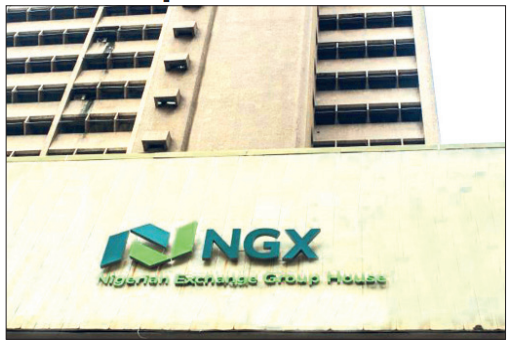On August 5, 2025, President Bola Ahmed Tinubu signed into law the Nigerian Insurance Industry Reform Act (NIIRA) 2025 — a sweeping overhaul designed to modernise Nigeria’s insurance and reinsurance framework for the first time in decades.
The legislation replaces a patchwork of outdated statutes with a unified, forward-looking regulatory regime aimed at strengthening capital bases, expanding compulsory coverage, digitalising operations, and protecting policyholders. Within hours of the President’s assent, the Nigerian equities market erupted.
The NGX Insurance Index surged 8.76 per cent in a single session, insurers like AIICO, NEM, and AXA Mansard each posted near-10 per cent gains, and market capitalisation jumped by N479 billion. By the end of the first full week after the announcement, the sector had rallied 36.3 per cent, adding N2.84 trillion in value and dominating market turnover — with three insurers alone accounting for over a third of all shares traded.
For an industry long regarded as the laggard of Nigeria’s capital market, the speed and scale of the rally are without precedent. But behind the exuberance lies a nuanced picture — one of genuine reform-driven opportunity tempered by the hard lessons of market cycles.
Reform Blueprint
At the heart of NIIRA 2025 is a dramatic increase in capital thresholds: Life insurers: N billion (up from N2 billion) General insurers: N15 billion (up from N3 billion) Reinsurers: N35 billion (up from N10 billion) The intention is clear — to weed out undercapitalised operators, enable larger underwriting capacity, and reduce the dependence on foreign reinsurance for high-value risks.
The Act also broadens the scope of compulsory insurance well beyond motor and life policies. It now covers agriculture, SMEs, public infrastructure, and cyber liability, reflecting both Nigeria’s development priorities and emerging global risk profiles. Digitalisation is a cornerstone: all insurers must deploy fully digital platforms for underwriting, claims, policy issuance, and onboarding.
This not only promises faster service and wider rural penetration but also introduces stringent timelines for claims settlement, with penalties for delays — a bid to rebuild consumer trust in a sector often tarnished by payout disputes. Policyholder protection funds will act as a safety net, guaranteeing claims even if an insurer collapses.
The Act further tightens licensing rules, imposing stiff fines and potential prison terms for unlicensed operators and the insurers who transact with them. Collectively, these measures position the sector for consolidation, efficiency, and greater integration with regional markets via the ECOWAS Brown Card scheme.
Numbers Tell the Story
The NGX Insurance Index’s leap from 917.43 points to 1,250.62 in a week — and then to 1,372.40 by Monday, August 11 — marks its steepest ascent in years. Leading gainers included: Mutual Benefits Assurance Plc: +60.44% to N2.92 AIICO Insurance Plc: +59.82 per cent to N3.50 Sovereign Trust Insurance Plc: +59.06 per cent Cornerstone Insurance Plc: +54.46 per cent Universal Insurance Plc: +52.78 per cent Even the smaller players rode the tide:
Regency Assurance (+51.19%), Veritas Kapital (+51.08%), Coronation Insurance (+46.52%), and International Energy Insurance (+46.48%). The rally spilled into the broader market. The NGX Main Board Index rose from 6,750.53 to 6,947.14 points, and the NGX 30 Index gained modestly. The All-Share Index notched its 26th straight day of gains.
Expert’s View
Chief Blakey Ijezie, Founder and CEO of I & I Investments Ltd, believes the rally has strong underpinnings and could extend for weeks. “On the day the Act was signed, all insurance stocks were on bid — no sellers,” he recalls. “That momentum has continued. Anybody who even keys-in today could still see substantial returns in a month,” Ijezie told New Telegraph on Monday. For him, the reforms are not cosmetic.
Mandatory insurance for new classes of risk, combined with stronger regulatory enforcement, will expand revenues and, ultimately, dividends. “When profits grow, companies will have no choice but to pay better dividends. Recapitalisation will also come, strengthening the sector,” he says.
He points to developed markets where insurers rival banks in size and influence. “People are positioning now because the sector could become a major driver of financial market growth in the coming years,” said Ijezie, who is well known for taxation and his consistent tax reform advocacy that heralded Nigeria’s tax report.
For now, the NGX rally is both a vote of confidence and a test. Investors are betting that NIIRA will usher in a new era of growth, discipline, and relevance
Still, he cautions against blind enthusiasm. Insurance has been an underperformer for two decades, save for a few strong names like NEM Insurance and AXA Mansard. “By the time some early buyers take 100 per cent or 150 per cent profit, prices could cool off. And with smaller insurers, liquidity could be a problem in 45 to 60 days when the hype fades,” he warns.
On share reconstruction — a likely outcome for firms struggling to meet new capital requirements — Ijezie advises prudence. “Recapitalisation is a given, but before people invest, they have to consult.” His “stocks to watch” list includes NEM Insurance, Mutual Benefits, AIICO, and a select few others. “Within the good ones, the boys will be separated from the men,” he says.
Cautionary counterpoint
Dr. David Ogogo, former Registrar of the Institute of Capital Market Registrars (ICMR) and now CEO of Kenwalk Corporate Services, agrees the NIIRA 2025 reforms are a long-overdue catalyst for insurance. But he warns of the “bandwagon effect” now gripping the market. “The feeling is that there are certain things they have been doing underground that they can now do openly.
That is why prices are moving up — in recognition that the sector is no longer being ignored,” Ogogo observes. His concern is that sentiment, not fundamentals, is driving a portion of the rally. “As it is going up, some will start offloading. If a major investor exits, others will follow, and it can nose-dive again.
For any shrewd investor, it is not always good to join the bandwagon for long. Join reasonably, take profit, and move on,” said the capital market expert and author of several books on capital market. Ogogo also flags the risk to shareholder value from forced consolidations and share reconstructions as undercapitalised firms scramble to meet the new thresholds.
“Some will lose, others will gain — that’s how the market works,” he notes. Yet he credits the government for turning attention to neglected sectors. “Give it to the government — they are remembering sectors nobody was thinking about, not just oil,” he says, adding that reforms in insurance and earlier in the year in securities law could support the administration’s $1 trillion GDP target.
For sustained impact, Ogogo stresses the need for professional, non-political leadership in regulatory agencies. “Put round pegs in round holes — pure professionals who can help the industries. If you put people there just because of politics, you won’t get the results.”
Winners and Losers
Both analysts agree that NIIRA 2025 will accelerate mergers and acquisitions. Smaller, undercapitalised insurers will face a choice: merge, raise funds, or exit. Agusto & Co. estimates that full compliance could draw roughly N600 billion in fresh equity into the sector.
For the winners — likely the larger, better-capitalised, and digitally agile insurers — the consolidation wave could mean greater market share, improved risk retention, and the scale to compete regionally. For the laggards, it could mean disappearing from the board entirely.
Risks in Focus While optimism runs high, the road ahead is not without obstacles: Short-term volatility from compliance costs and market adjustments. Competitive pressure to innovate in newly compulsory segments like cyber risk and agriculture. Macro headwinds including a weak naira, high inflation, and lingering investor concerns over capital repatriation.
These factors could temper insurance penetration growth, even with NIIRA’s mandates. For investors, the sweet spot may lie in medium-cap insurers with solid balance sheets, proven governance, and a clear digital roadmap. Watching the M&A space will be crucial — today’s mid-tier player could be tomorrow’s market leader.
The combination of higher capital, broader coverage mandates, and consumer protection should, over time, improve both profitability and investor trust. But, as both Ogogo and Ijezie stress, timing and selectivity will be decisive. The NIIRA 2025 reforms represent more than regulatory housekeeping; they amount to a strategic repositioning of insurance in Nigeria’s economy.
If implemented effectively, they could transform the sector from a niche, low-trust segment into a central pillar of capital markets and economic stability. For now, the NGX rally is both a vote of confidence and a test. Investors are betting that NIIRA will usher in a new era of growth, discipline, and relevance for insurance.
The coming months — as compliance deadlines near and the first round of consolidations takes shape — will reveal whether that bet was prescient or premature. As Ijezie puts it, “any longterm or even short-term investor can benefit — but have your eyes open.” And as Ogogo warns: “Join reasonably, take profit, and move on.”
Last line
By 2030, the sector could well be a case study in how reform can turn a market also-ran into a growth engine — or a reminder that policy momentum must always be matched by execution on the ground.



